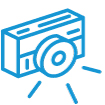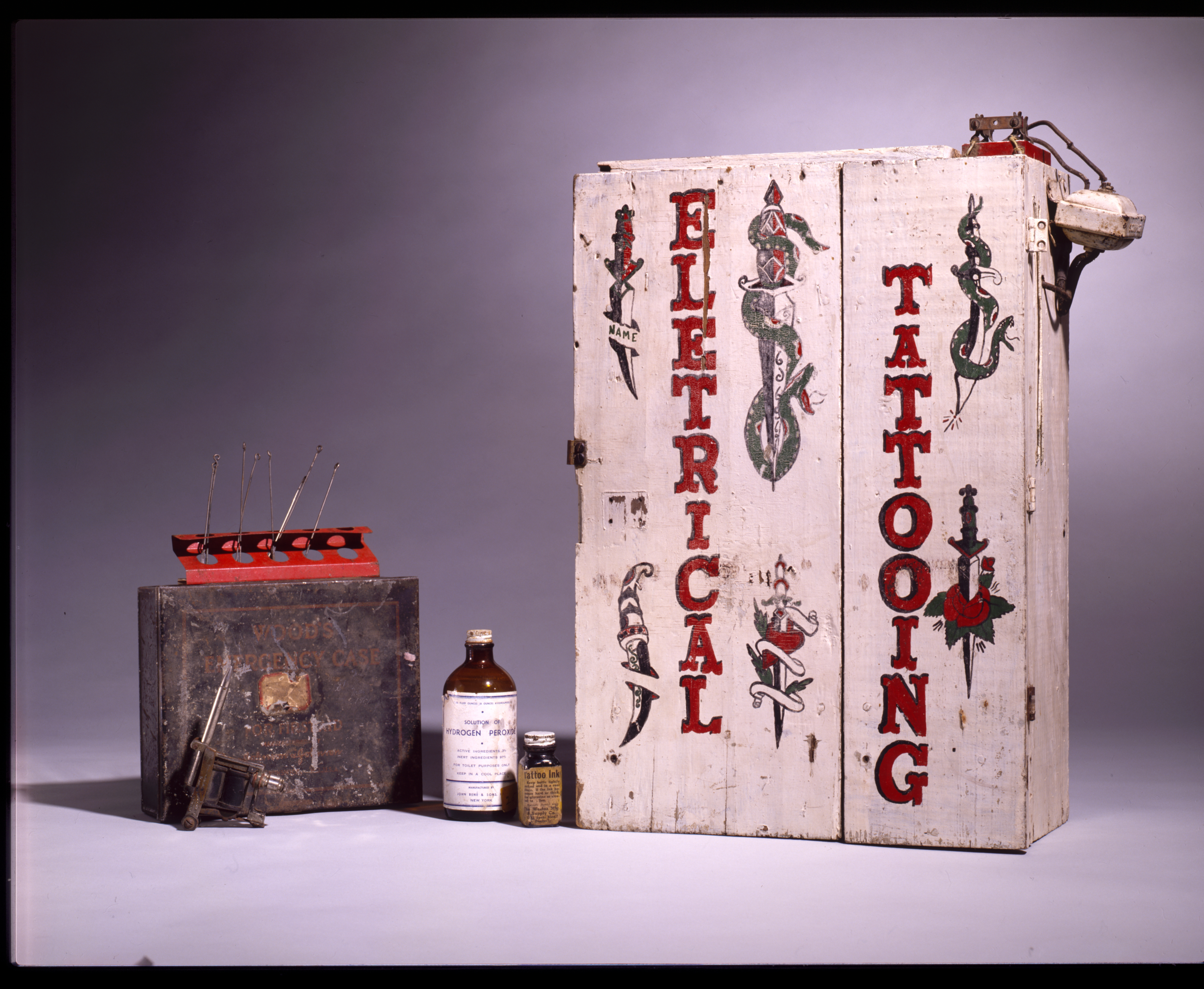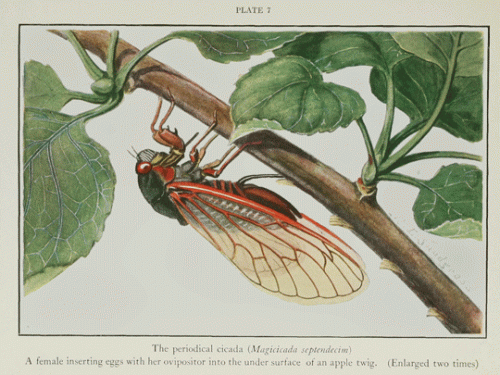A New York City tattoo artist, Samuel O’Reilly, was granted a patent for the first tattooing machine in 1891. By adapting Thomas Edison's design for an electric pen, O’Reilly created a tattoo machine with a reciprocating motor that powered a needle, which was faster and less painful than previous hand methods. Before this, even the most proficient tattoo artist could only puncture the skin two or three times a second compared to the tattoo machine’s 50 punctures per second.
The machine and tattoo supplies needed to be portable because early American tattoo artists traveled constantly along the eastern seaboard, selling their craft to sailors at the different ports.
This tattoo set, from the 1920s–1930s, includes a painted wood box with iron and brass trim containing electrical fittings, tattoo needles of various sizes and ink, a bottle of hydrogen peroxide, a paper card, labels, metal box and glass boxes. It is in the Smithsonian American Art Museum’s collection.
View more of the museum’s tattoo-related art, such as this 20th-century tattoo flash (“flash” refers to common tattoo designs drawn on paper or cardboard) and a tattoo flash sample book.
Read about the world’s oldest tattoos and about tattoos as an art form.



